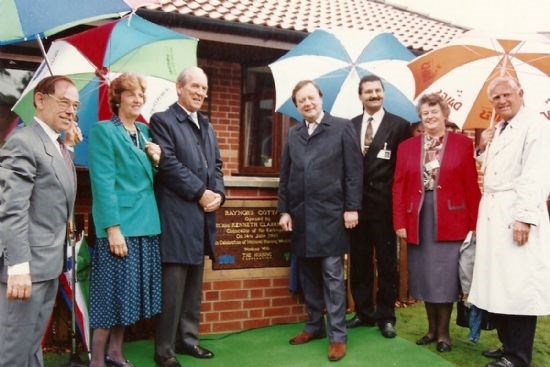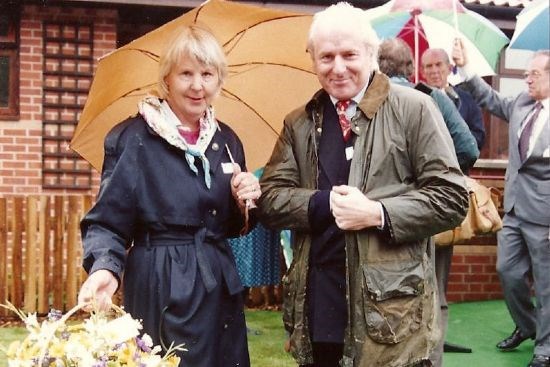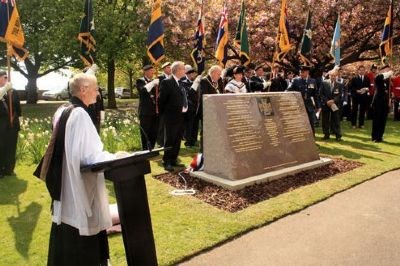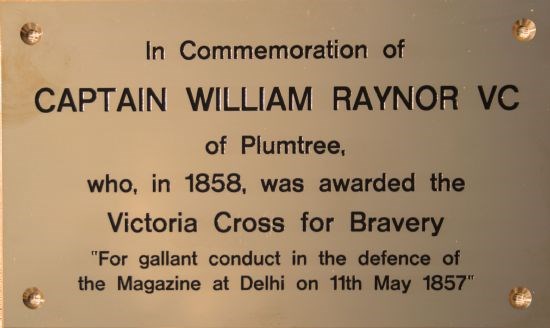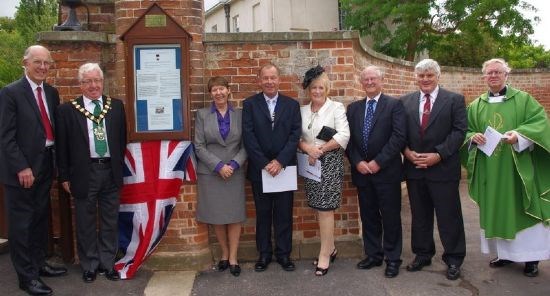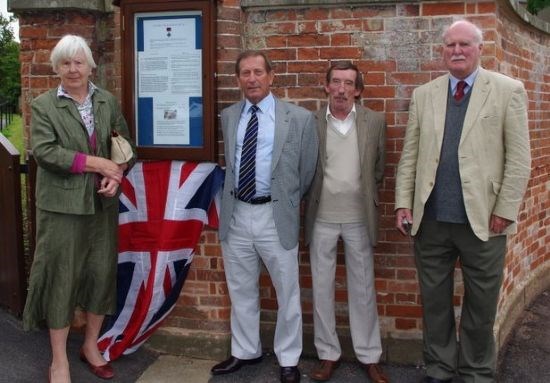William Raynor VC (1795-1860)
William Raynor was born in Plumtree in 1795, joined the Honourable East India Company and had a distinguished military career which culminated in his defence of the Magazine at Delhi during the Indian Mutiny, an act for which he was awarded the Victoria Cross.
This page summarises the life of Captain Raynor, how he won his VC, how it was sold and bought back again, and how he is commemorated in Plumtree, the village of his birth.
Click on a button below to display further details. Use your browser's Back button to return here.
Early Life
|
July 1795 |
William Raynor was born in the village of Plumtree, Nottinghamshire. His parents were John and Elizabeth Raynor (neé Tongue) who were married on 22nd January 1793 in St Mary's Church, Plumtree. William had an older sister, Mary, who was baptised in St Mary’s Church, Plumtree on 18th January 1794 but died in infancy (buried 22nd June 1795). William's parents, Elizabeth (who died in July 1819, aged 63) and John (who died in October 1819, aged 57) are both buried in Plumtree churchyard. |
|
10th August 1796 |
William was baptised in St Mary's Church, Plumtree. |
Army Service
|
1812 |
Enlisted in the Service of the the Honourable East India Company. |
|
February 1813 |
Arrived in India in the HEIC's ship "Hugh Inglis" having been allotted to the Bengal European Regiment. |
|
8th October 1819 |
William Raynor married Mary Wilkinson, a widow (who, sadly, died in 1819). |
|
6th November 1820 |
Appointed a Sub-Conductor in the Ordnance Commissariat Dept. and was soon afterwards posted to the arsenal in Fort William. |
|
14th January 1823 |
Promoted to the rank of Conductor and posted to the Magazine at Cawnpore (at which station he served uninterruptedly for more than twenty years). |
|
27th August 1823 |
William Raynor married Mary Anne Werril at Cawnpore, India. They went on to have five children:
|
|
6th October 1843 |
Promoted to the rank of Deputy Assistant Commissary of Ordnance and posted to the Delhi Magazine (in which he served for nearly fourteen years). |
|
17th April 1845 |
Promoted to the rank of Assistant Commissary of Ordnance. |
|
17th August 1852 |
Advanced to commissioned rank (Commissary of Ordnance) and appointed a Lieutenant of the Veteran Establishment. This type of promotion was almost unheard of within the East India Company's army, a substantial achievement. |
|
10th July 1855 |
Posted to the Magazine at Ferozepore, but was directed to continue doing duty as a temporary arrangement at Delhi. He was in Delhi at the outbreak of the Indian Mutiny in 1857. |
Indian Mutiny
|
1857 to 1859 |
Causes Outbreak Delhi The recapture of Delhi became a priority for the British. On 7 June 1857 a hastily-raised force of 4,000 men succeeded in occupying a ridge overlooking Delhi but was far too weak to attempt to retake the city itself. Faced by over 30,000 mutineers they came under increasing pressure themselves and began to suffer losses through cholera. However reinforcements gradually arrived from the Punjab, including a siege train of 32 guns and 2,000 men under Brigadier-General John Nicholson. By 14 September the British had about 9,000 men before Delhi. A third were British while the rest were Sikhs, Punjabis and Gurkhas. Breaches were made in the city walls, a gate was blown and after a week's vicious street fighting, Delhi was back under British control. Although operations continued until 1859, notably in central India, the recapture of Delhi proved a decisive factor in the suppression of the Mutiny. |
Defending the Delhi Magazine
|
11th May 1857 |
In his book 'The History of the Victoria Cross' , Philip A Wilkins described the action as follows... The troublous times of the Indian Mutiny brought to light many examples of bravery, devotion and self-sacrifice, but it was left to a little band of nine resolute men to perform the act which, of all the heroic ones of those days, will be the last to be obliterated by the hand of time. On May 11, 1857, the great Delhi Magazine, full of enormous stores of warlike material, was in charge of Lieutenant George Willoughby, Bengal Artillery, and with him were Lieutenants Forrest and Raynor, and six European soldiers. In the early hours of that day Willoughby was in the magazine when Forrest arrived with the Magistrate, Sir Theophilus Metcalfe, and informed him that the mutineers had crossed the river and entered the palace gates. Knowing well the value of the Magazine to the enemy should they contrive to storm and take it, and how much to our cause could he but hold it, Willoughby resolved to defend it to the last, always with the hope that our troops at Meerut would soon arrive to his relief. There were many natives on the establishment of the Magazine, but the officer saw they were not to be trusted, and he formed the heroic resolution with his eight British comrades to defend the Magazine as long as possible against the enormous odds and then at last, when overpowered, to blow the building into the air with all its inflammable contents and themselves to die at their posts. The gates were closed and barricaded, and guns were brought out, loaded with grape shot and placed so as to command the entrances. Should the enemy force their way in through these channels, their ranks would be torn to pieces by the point blank fire of the six pounders, and then if the little band should be overpowered, at a signal – pre-concerted by Willoughby – the entire place was to be blown up and any within its walls would perish. To this end a train of powder was lain from the outside to the Magazine, Scully, with heroic resolution, undertaking the firing of the train, this duty making death a certainty should the signal be given. Shortly afterwards a summons was brought from the King of Delhi, ordering the surrender of the Magazine. Contemptuous silence was the only reply given, upon which the enemy, bringing ladders, commenced to scale the walls, the natives in the establishment promptly joining their friends the attackers. Thus the resolute nine, left alone, faced Death with fearless hearts, and soon the guns sent volleys of grape into the midst of the storming parties. Gun after gun fired its rounds, served coolly and steadily, the heroic gunners under a hail of bullets from those of the enemy who had now scaled the walls. After a while the supply of ammunition brought up from the Magazine began to give out, and it was impossible for more to be fetched, no one being able to leave the guns for that purpose. Two of the gallant nine were wounded and the rebels were forcing their way in now on every side, and to his country's cause, Willoughby raised his hat – the signal arranged – John Scully applied the port-fire to the train and with an appalling explosion, the Magazine was blown into the air, more than one thousand mutineers being killed. Of the nine heroic men, only four escaped; Willoughby and Forrest joined a party of Europeans at the Main Guard in Delhi, so blackened as to be almost unrecognizable; the former being shortly afterwards killed in an encounter with the mutineers. Raynor and Buckley, taking different directions, eventually reached Meerut in safety. The splendour of this achievement, the nobility of heart of those who deliberately offered their lives in the furtherance of their country's cause, makes the Victoria Cross almost an insufficient reward. But, added to that decoration, and to perpetuate the memory of the heroic lives given for such a cause, a memorial tablet was placed over the gate of the old Magazine. The memorial tablet bears the following inscription: On the 11th May 1857 Lieutenant William Raynor. Lieutenant Geo. Forrest, Conductor Geo. William Shaw, Conductor John Buckley, Conductor John Scully, Sub-Conductor William Crow, Sergeant BenjaminEdwards, Sergeant Peter Stewart Defended the Magazine of Delhi for more than four hours against large numbers of the rebels and mutineers, until the walls being scaled, and all hope of succour gone, these brave men fired the Magazine - five of the gallant band perished in the explosion, which at the same time destroyed many of the enemy. This Tablet Marking the former entrance gate to the Magazine is placed here by the Government of India. However, a second tablet added later puts a different slant on the proceedings:
|
Victoria Cross
|
June 1858 |
For his bravery defending the Delhi Magazine during the Indian Mutiny, Lieutenant William Raynor was awarded the Victoria Cross. His citation in The London Gazette was: 'For gallant conduct in defence of the Magazine at Delhi, on the 11th May 1857. Of the gallant nine only four escaped. When the Magazine was blown into the air, five of them died with it – and with them died also a thousand Mutineers. Willoughby and Forrest joined a party of Europeans at the Main Guard at Delhi, so blackened as to be almost unrecognizable. Willoughby was shortly afterwards killed in an encounter with the Mutineers in a village on the way to Kutrnaul. At the attack on the fort at Rootya, Lieutenant Edward Willoughby (brother of the Willoughby of the Powder Magazine), though on the sick-list, left his dhooly to join in the fight, and was killed in a daring attempt to scale the parapet. Captain Cafe and Private Thomson brought in his body, and won the Victoria Cross. The two other men of the nine who escaped were Raynor and Buckley, who, taking different directions, eventually reached Meerut in safety.' The VC citation was: 'On the 11th May 1857 at Delhi, India, Lieutenant Raynor and nine other soldiers defended the Magazine of the fort for more than five hours against a large vastly superior number of rebels and mutineers. When the enemy had finally scaled the wall and with no relief in sight, Lieutenant Raynor ordered the contents of the Magazine to be detonated. Only Lieutenant Raynor and two other soldiers survived, but many of the enemy were killed. At the age of 61 Lieutenant William Raynor is the oldest person to receive the Victoria Cross.'
CAPTN. WM. RAYNOR It was about this time that William Raynor was promoted to Captain, a rank he held until his death. William Raynor was aged 61 years and 10 months when he was awarded his Victoria Cross – the oldest recipient ever (a record which is unlikely to be broken since these days Army officers tend to retire at when they are fifty-five). |
William Raynor's Death
|
13th December 1860 |
William Raynor died of natural causes at Ferozepore in North India on the Indo-Pakistan border. |
|
14th December 1860 |
William Raynor was buried at the Ferozepore Civil Cemetery; the site of his grave is shown below. His tombstone read:
Dept. Commissary of Ordnance who died at Ferozepore on the 13th December 1860 Honoured and beloved he lived
Note: Captain Raynor's tomb was originally a substantial monument surrounded by cast iron railings. The above image shows the site of the tomb after it was '...desecrated' to quote his great great grandson. |
|
3rd August 1865 |
By a sunnud, or imperial warrant, of August 1865, William Raynor's widow, Mary, was granted 2,000 acres of forest at Dehra Dun, 100 miles north of Delhi, close to the foothills of the Himalayas. Some of this land was turned by her and his children into a tea plantation, but probably most of it into a leper colony, which became known as 'Raynorpore'. Unfortunately, the family papers relating to it have long since disappeared, but the name may have survived in that of the town of Ranipur, near which there is still a large school for the children of lepers. |
Events of 1960 to 1990
|
1960/1961 |
William Raynor's VC had remained in the Raynor family since it was awarded in 1858. However in 1960/1961, Raynor's great grandson (who was a retired Indian Army colonel) reluctantly had to sell the medal when a combination of factors put the family in financial straits. The medal was sold by Spink Dealers and Auctioneers to an anonymous American collector. |
|
November 1987 |
The William Raynor VC came up for auction. William's great-great grandson (also called William) and great-great granddaughter (Shirley) were determined to buy it back and, via a benefactor, they successfully raised the £11,000 needed to secure its purchase. The medal was again sold by Spink Dealers and Auctioneers. |
|
17th December 1987 |
The new owners presented the medal to the Royal Army Ordnance Corps (RAOC) Museum at Blackdown Barracks, Deepcut in Surrey |
|
13th October 1988 |
The medal was displayed in the RAOC Museum alongside the Victoria Cross awarded to Raynor's colleague, William Buckley. Note that the RAOC Museum is now part of Royal Logistic Corps and is based in The Princess Royal Barracks, Deepcut. The Raynor family is very happy now that the medal is in the safe hands of the RAOC. Sadly, it is not currently on display but is stored in the bank; it can be viewed, if requested. |
Raynor's Cottages
|
April 1993 |
As part of preparations for National Housing week (7th to 13th June 1993) during which two semi-detached bungalows were to be built on Church Hill, Plumtree Parish Council decided that they would like to name the bungalows 'Raynor Cottages' in honour of William Raynor. They wrote to the curator of the RAOC in an attempt to trace any surviving relatives of Captain Raynor. His relatives (William and Shirley, see details of the sale and recovery of the medal above) were duly traced and were invited to the "handing over of the keys" ceremony to be held on June 14th. |
|
8th June 1993 |
Work starts on constructing Raynor's Cottages. |
|
14th June 1993 |
Raynor's Cottages opened by Rt Hon Kenneth Clarke QC MP, Chancellor of the Exchequer in celebration of National Housing Week 1993.
William Raynor's great-great-grandchildren Mr William Raynor and Mrs Shirley Trollope. |
Nottinghamshire Victoria Cross Memorial Project
|
7th May 2010 |
The Nottingham and Nottinghamshire Victoria Cross Memorial Project's Memorial to Nottinghamshire's Twenty Recipients of the Victoria Cross is officially unveiled in the grounds of Nottingham Castle.
Photo courtesy of the Castle Rock brewery |
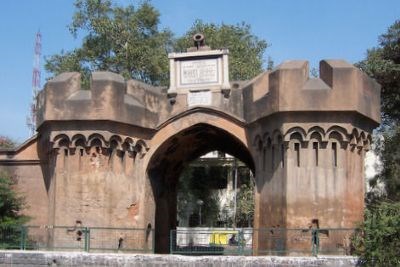
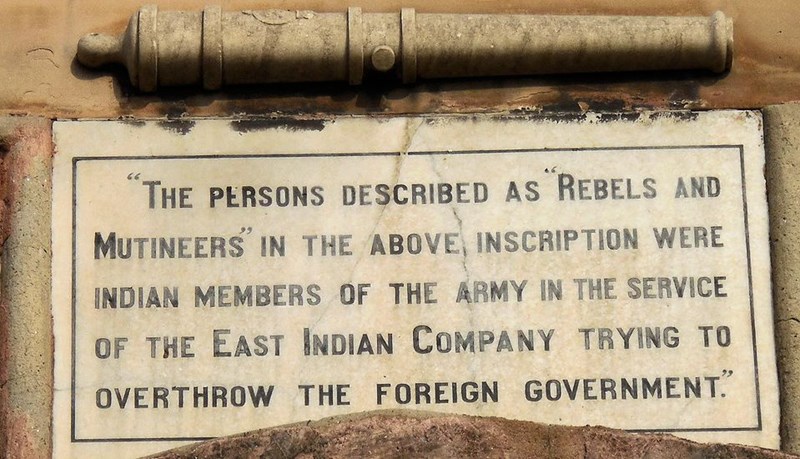
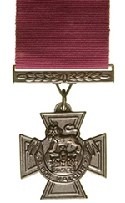 The engraving on the reverse of the Victoria Cross reads:
The engraving on the reverse of the Victoria Cross reads: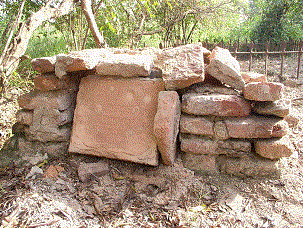 Beneath this tomb lie the mortal remains of
Beneath this tomb lie the mortal remains of